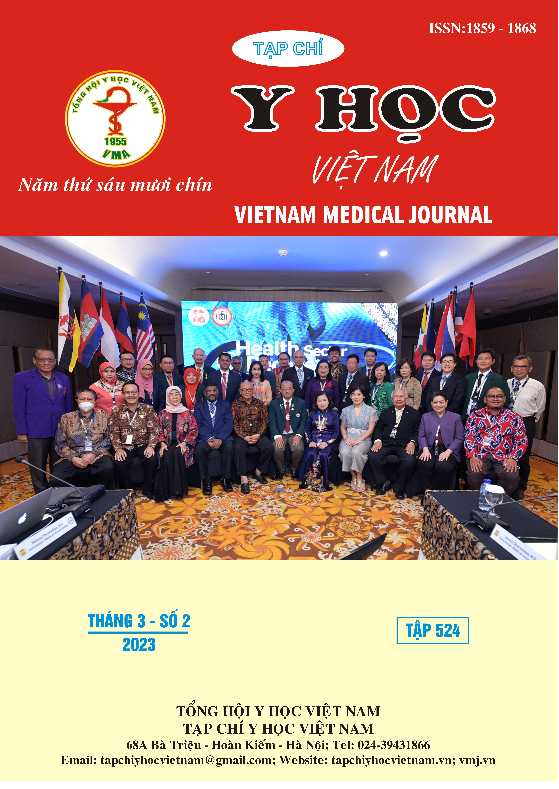SOME CHARACTERISTICS OF BLEPHARITIS PATIENTS TREATED WITH OCUSOFT AT NGHE AN EYE HOSPITAL
Main Article Content
Abstract
Objectives: Determine some characteristics of Demodex blepharitis patients treated with Ocusoft. Subjects and methods: Prospective corelation study, 102 patient's eyes test found 1 Demodex on eyelash follicles treated with Ocusoft at Nghe An Eye Hospital from July 2021 to July 2022. Results: Patients in the study group came from rural areas (64.7%), more than patients from cities (35.3%), the difference was statistically significant with p<0.05. Only 9 patients were reported to have been treated for blepharitis (17.6%). The most common functional symptoms in the study group of patients were eyelid itching (100%), eyelid swelling (98%), dry eye feeling (96.1%). The second most common causes were the groups of symptoms of lacrimation and eyelid swelling (66.7% and 54.9%, respectively). Less common symptoms were eyelid burning sensation and eyelid sticky sensation (37.3% and 33.3%). The most common physical symptoms in the study group were blepharospasm and ciliary cystic dandruff (98%). In the group of patients, there was mainly a state of tear insufficiency with the Schimer I test <10mm, accounting for 56.9%. The number of patients with BUT test results <10 seconds is the main dry eye (84.3%). Level 2 ocular surface lesions accounted for the highest rate (47.1%), then to grade 1 and 3 (21.5% and 19.6 respectively. The highest OSDI score was 36, the lowest was 8. Most of the study group had visual acuity in the group ≥5/10 and from 2/10-5/10, the average number of Demodex was 8.02±2.43 individuals/microenvironment.
Article Details
Keywords
Blepharitis, ocusoft, demodex
References
2. Lemp M.A., Nichols K.K. (2009). Blepharitis in the United States 2009: a survey-based perspective on prevalence and treatment. Ocul Surf, 7(2 Suppl), S1–S14.
3. Holzchuh F.G., Hida R.Y., Moscovici B.K., et al. (2011). Clinical treatment of ocular Demodex folliculorum by systemic ivermectin. Am J Ophthalmol, 151(6), 1030-1034.e1.
4. Salem D.A.-B., El-Shazly A., Nabih N., et al. (2013). Evaluation of the efficacy of oral ivermectin in comparison with ivermectin-metronidazole combined therapy in the treatment of ocular and skin lesions of Demodex folliculorum. Int J Infect Dis, 17(5), e343-347.
5. Bron A.J., Benjamin L., Snibson G.R. (1991). Meibomian gland disease. Classification and grading of lid changes. Eye (Lond), 5 ( Pt 4), 395–411.
6. Liang L., Liu Y., Ding X., et al. (2018). Significant correlation between meibomian gland dysfunction and keratitis in young patients with Demodex brevis infestation. Br J Ophthalmol, 102(8), 1098–1102.
7. Craig J.P., Nelson J.D., Azar D.T., et al. (2017). TFOS DEWS II Report Executive Summary. Ocul Surf, 15(4), 802–812.
8. McCulley J.P., Sciallis G.F. (1977). Meibomian keratoconjunctivitis. Am J Ophthalmol, 84(6), 788–793.
9. English F.P. (1970). The role of the acarid Demodex folliculorum in ophthalmology. Trans Aust Coll Ophthalmol, 2, 89–92.


